Sometimes your freezer is stocked to the brim, but you're not exactly sure how to thaw certain types of food. Don't worry, you'll know the best thawing methods for just about anything by the time this is over!
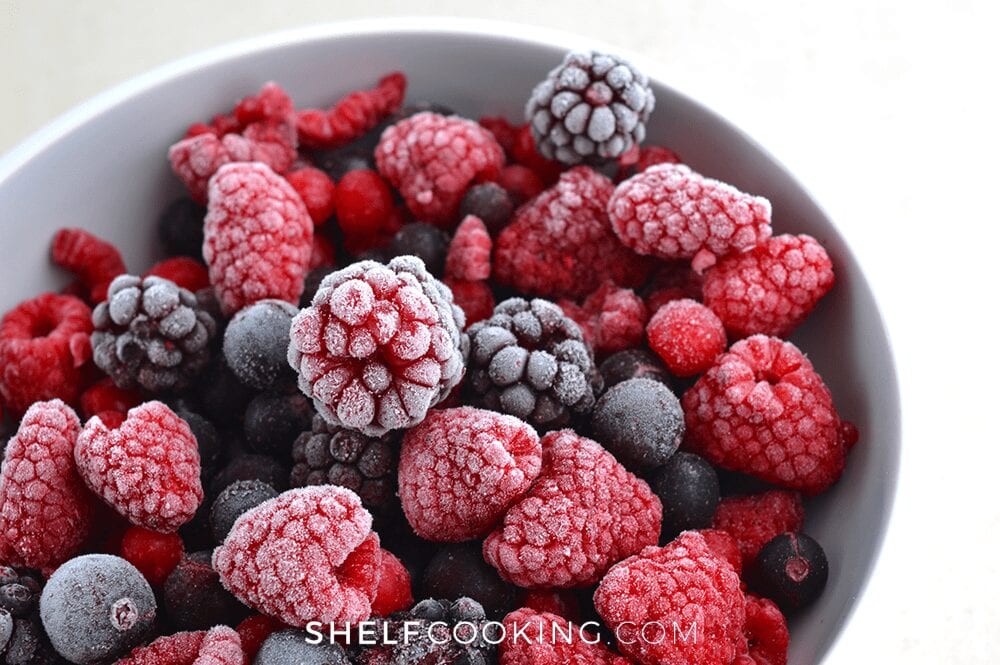
By now, you know all the perks of using your freezer. Now let’s talk about the rest of the story. How do you thaw all that delicious food you've just stocked away? The key to freezing is to plan ahead enough to get the food thawed when you want to use it.
*Note: When you click the links in this post, we may receive a commission at no extra cost to you.
Want some good news? It’s really not that hard, and you’ve already got everything you need at your fingertips. Keep reading to learn more!
THAW YOUR FOOD SAFELY
It's really not hard to thaw your food. All you have to do is follow a few basic tips (seriously, they're totally basic) and your food is thawed safely and ready to be cooked. But if you don't follow these easy steps, you could end up wrecking your food or, even worse, getting a nasty case of food poisoning.
Food poisoning? What the what?! Yep, you heard me right. Let’s talk about that for just a minute. Here’s the scoop: freezing food puts bacteria (and other nasties) in suspended animation (yay!), but it doesn’t kill them (boo!). When food starts to get warm again, the bacteria comes to life and starts to multiply. The so-called “danger zone” is between 40°F (5°C) and 140°F (60°C). Let's think about that for a minute. Your fridge is cooler than 40°, and when you cook food, it gets hotter than 140°. So the key is limiting the amount of time that any food lingers in the “danger zone.”
Right now, you’re probably thinking, “I’ve thawed food out on the counter lots of times, and I’ve never gotten sick.” We all have, and we've all gotten lucky if we haven't gotten food poisoning. All it takes is that one time to convince you that letting those chicken breasts sit out on the counter was really not a good idea.
WHAT TO COOK WITHOUT THAWING
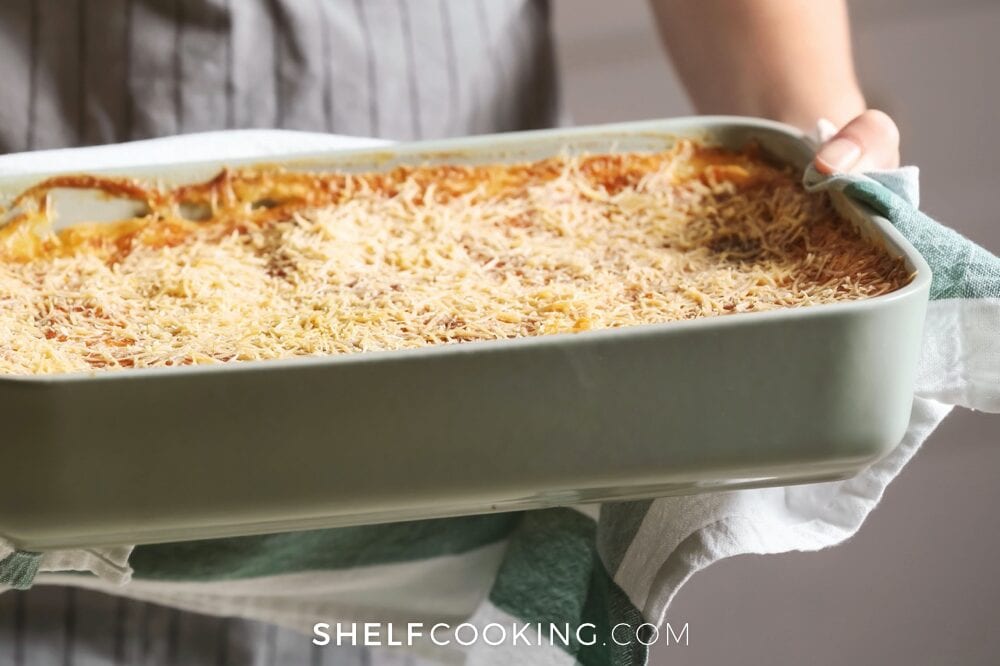
Before we get into the basics of thawing, let’s talk about foods you can cook without having to thaw them. Talk about making your life super easy, right? Here are some basic guidelines:
- Thinner cuts of meat (pork chops, steaks, some chicken) do not have to be thawed if you will be cooking them quickly over high heat.
- Frozen fruits don’t need to be thawed if you’re adding them to a dish that will be cooked.
- Frozen veggies don’t need to be thawed. It's really best if you cook them frozen.
- Precooked meals don’t have to be thawed. However, they will cook more evenly once they are thawed.
- Soup can be cooked without thawing it first.
- Never put frozen food in the slow cooker. Seriously, just don't chance it!
- Never thaw stuffed poultry (chicken, turkey, game hens). Cook it directly from frozen.
ADJUST THE COOKING TIME FOR FROZEN FOODS
Make sure you remember this about cooking frozen food: anything that’s frozen has to be completely thawed with whatever cooking method you’re using before any actual cooking takes place. This means you have to adjust the cooking time to allow for that thawing. Three tips to keep in mind:
- As a general rule, add 50% to the cooking time. In other words, a casserole that takes an hour to bake will take about an hour and a half to bake from frozen.
- Since the dish will be in the oven longer, turn the oven down 25 degrees so the edges don’t get overcooked (or burned) and the middle has time to catch up.
- When cooking a frozen dish in the oven, cover it with foil so the top and edges don’t get too browned.
HOW TO THAW FOOD
There are four basic methods of thawing food: in the fridge, in the microwave, in cold water, and on the counter. I'm all about safety here, so not all of these methods are safe for all foods. Don't worry, I'll lay it all out for you!
HOW TO THAW IN THE FRIDGE
This should be your number one thawing method. It’s the absolute safest way to thaw food. If you're in doubt on how to thaw something, thaw it in the fridge! But of course, it’s also the slowest way to thaw food (a pound of meat can take an entire day to thaw), so you have to plan ahead. This isn't a spur-of-the-moment kind of thing.
It's so easy to thaw food in the fridge and doesn’t require any special preparation – just leave the food in its freezer container and plop it in the fridge. You can also refreeze foods if they were thawed in the fridge with a very minimal loss of quality. The USDA recommends this method for safety reasons since the fridge keeps foods out of the “danger zone.”
TIPS AND TRICKS FOR THAWING IN THE FRIDGE
- If you can, keep the food in its original container or freezer container.
- Put it on a plate or small tray to catch any liquids as it thaws.
- Avoid the coldest spots in your fridge, which are usually at the back.
- Make sure it has air circulation to help it thaw more quickly. If you have something else that's cold on or right next to it, it'll take longer to thaw.
- Give it enough time for the food to thaw completely. As a general rule, it takes at least a day to thaw every five pounds of food. A pound of ground beef or boneless chicken breasts will take 12 hours to thaw completely. A medium-sized turkey will take at least 24 hours.
HOW TO THAW IN THE MICROWAVE
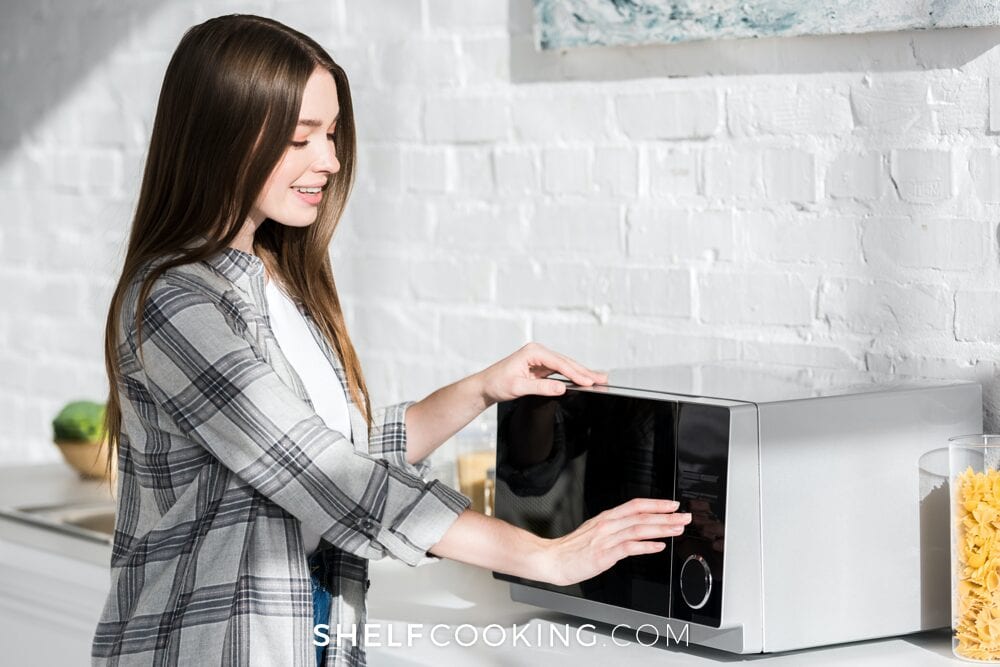
The microwave is obviously a much faster option than the fridge. A pound of ground beef that takes 12 hours in the fridge will only take about 9 minutes in the microwave, give or take. For those of you keeping track, that’s a big difference. It’s also super convenient.
While that may want you to thaw all of your food in the microwave, there are a few things to think about. First, food thawed in the microwave often thaws unevenly; most of it might be thawed, but you might have a few spots in the middle that are still frozen. Second, thawing food in the microwave can dry it out. Third (and probably the biggest downfall), you can inadvertently start cooking the food while it’s thawing; you can get ground beef that’s cooked on the outside and still frozen in the middle. Yum.
TIPS AND TRICKS FOR THAWING IN THE MICROWAVE
- When it's possible, keep the food in its original container or freezer container.
- Put it on a plate in the microwave to catch any liquid as it thaws.
- Cook the food as soon as you thaw it. The uneven heating of the microwave can allow bacteria to start to grow.
- For the same reason, serve foods immediately when you’ve thawed them in the microwave. I'm looking at you, frozen fruits and veggies!
- If you’re thawing something that's large and bulky, check it at intervals to see how it’s doing. Some foods thaw more quickly than the defrost setting indicates. This is when your food can start cooking if you don't watch it.
- You can refreeze foods you thaw in the microwave if you cook them thoroughly before freezing them again.
HOW TO THAW IN COLD WATER
When it's done correctly, thawing something in cold water is as safe as thawing it in the fridge. It’s a whole lot faster, too. Basically, you're submerging the frozen item completely in cold water until it has thawed. Thawing in cold water is especially great for fruit, veggies, sauces, dairy products, cooked meals, and meat. However, you never want to thaw baked goods (such as bread) in cold water.
All you have to do is put the wrapped, water-proof food under cold water in a bowl, pot, or your sink. Drain off the water every 30 minutes and replace it with fresh, cold water until the food is completely thawed. As a rule of thumb, you can thaw a pound of frozen food in less than an hour; you should figure 30 to 45 minutes for every pound. Frozen veggies thaw almost instantly; smaller pieces of food, like shrimp, also thaw quickly.
The only downside is the hassle. You have to make sure the food stays all the way under the water, and you have to change it every half hour. At first, the frozen food will keep the water pretty cold, but as it thaws, there’s a danger of the water getting too warm. If you let that happen, then you've got another one-way trip to the “danger zone.”
TIPS AND TRICKS FOR THAWING IN COLD WATER
- Use only food in a sealed, watertight container or freezer bag. (Um, duh.)
- To keep the food completely under the water, put something heavy on top of it (like a plate) to hold it down.
- When you can, use a pot or pan instead of the sink. It's faster this way and it takes less water.
- Make sure you drain and change the water every 30 minutes.
WHAT TO THAW ON THE COUNTER
Thawing on the counter is only safe for fruits, breads, pastries, and other baked goods. (Don't ever try it for meat, fish, or veggies.) These generally take two to four hours to thaw completely at room temperature.
HOW TO THAW CHICKEN
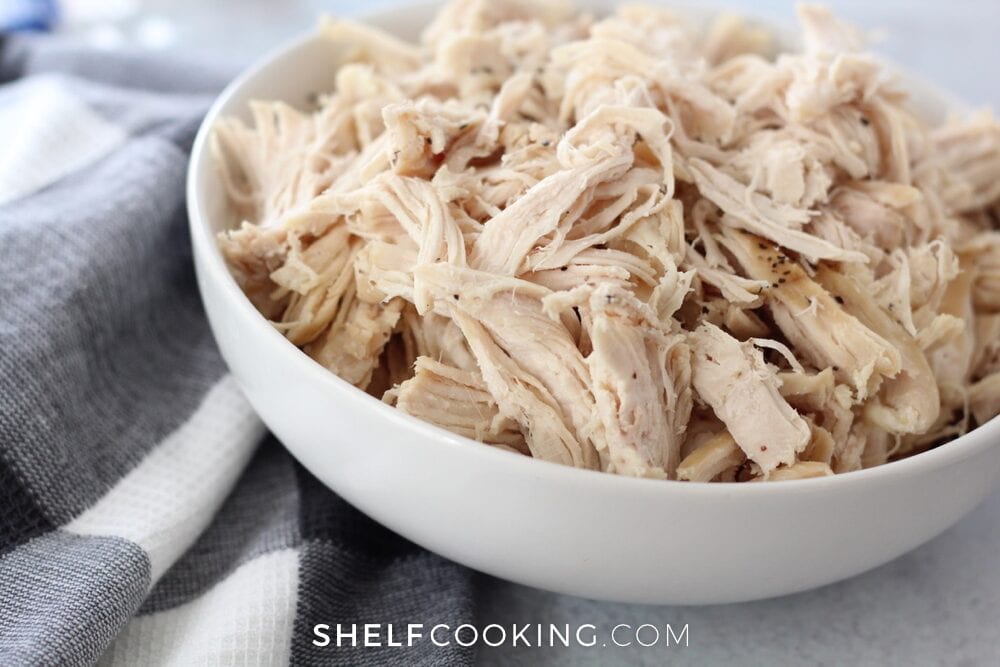
If you're like me, then you eat a lot of chicken in your house. It's usually pretty cheap and so versatile! However, it can spoil super fast. Fortunately, you can take a few precautions to prevent that. Just remember: never thaw chicken at room temperature. You’re just asking for trouble. But you can thaw chicken safely in the fridge, microwave, or in cold water.
IN THE FRIDGE
- Whenever possible, leave the chicken in its original container, preferably sealed.
- If the chicken has been removed from its original container, make sure it’s covered the whole time it is thawing. I like to put mine in a gallon storage bag.
- Put the chicken on a plate to catch any liquid; chicken “juice” can contaminate other foods. If you're like me and put it in a bag, then you don't have to worry about that not-so-yummy juice getting everywhere.
- Give yourself enough time! A pound of boneless chicken pieces will usually thaw in about 12 hours. Bone-in pieces will take 24 to 36 hours. A whole chicken will take at least three days.
- Do not leave thawed chicken in the fridge for longer than three days. Remember, it spoils quickly!
- You can refreeze chicken that was thawed in the fridge if you cook it first.
IN THE MICROWAVE
- Whenever possible, leave the chicken in its original container, preferably sealed.
- If the chicken has been removed from its original container, make sure it’s covered the whole time it is thawing. Never microwave chicken in any kind of metal container (obviously).
- Put the chicken on a plate to catch any liquid and be careful when you take it out of the microwave. Spilling chicken “juice” will require you to sanitize the whole interior of your microwave and anywhere else that you spill it.
- Cook chicken that you thaw in the microwave immediately. Thawing in the microwave can get it warm enough to be in the “danger zone.”
- You can thaw chicken in the microwave, but don’t cook it there. The end result will be dry, rubbery chicken, and nobody wants that!
IN COLD WATER
- Make sure the chicken is in a sealed, airtight, watertight container.
- Be extra vigilant about changing the water every 30 minutes (at the most) and keeping it very cold.
- When you change the water, make sure it goes directly down the drain.
- If you thaw chicken in the sink, sanitize it afterward. (Seriously, just sanitize anything that chicken may have come in contact with when you're thawing and cooking!)
- You can refreeze chicken thawed in cold water if you cook it first.
- One pound of boneless chicken pieces will thaw in about half an hour. A three- or four-pound chicken will thaw in about three hours.
DO YOU HAVE TO THAW CHICKEN?
You should never, ever put frozen chicken in a slow cooker. But you can safely cook it in the oven, on the stove, or on a grill. Just remember to add 50% to your cooking time.
Remember, the only way food-borne bacteria can hurt you is if you eat it. This includes something that was contaminated by chicken juice, but not cooked. No amount of frugality is worth getting sick. If you think your food, fresh or frozen, may be unsafe, throw it away! Whatever you do, don’t taste it to find out!
What is your preferred method of thawing food? Let me know in the comments!
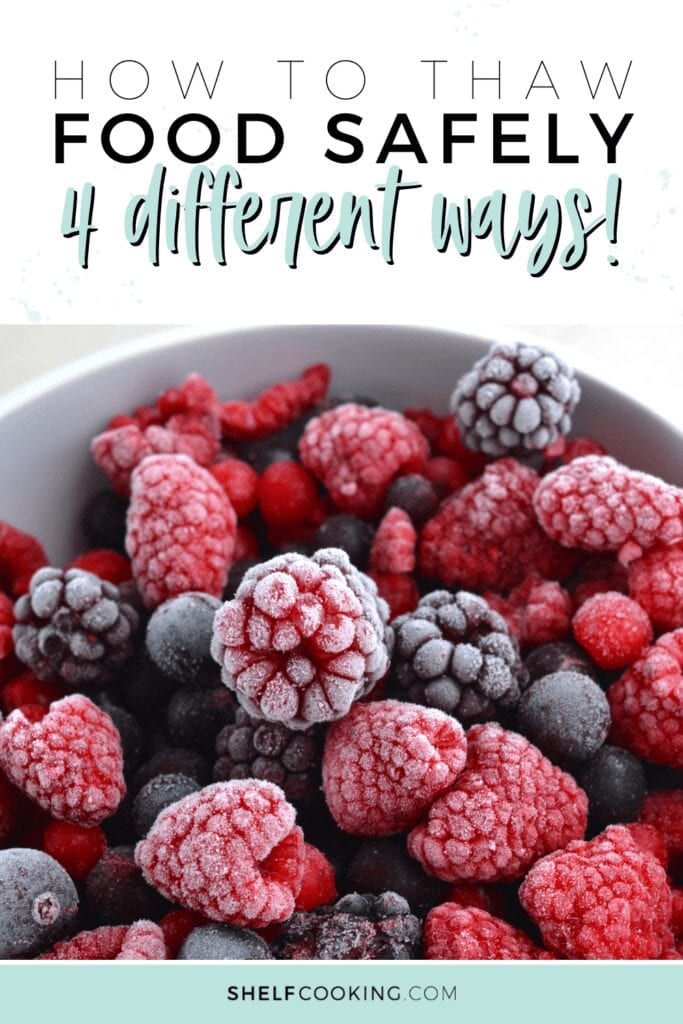
Want more?
- Learn how to reheat leftovers.
- Use your frozen chicken by making Instant Pot shredded chicken.
- Stop wasting your freezer food and learn how to prevent freezer burn!
- Take an inventory of your food and never let something go bad again!
Enjoy!
